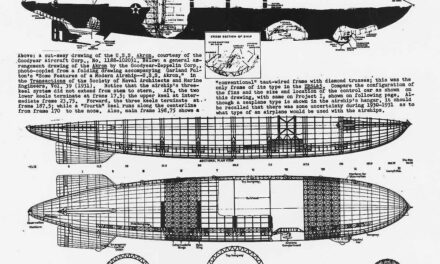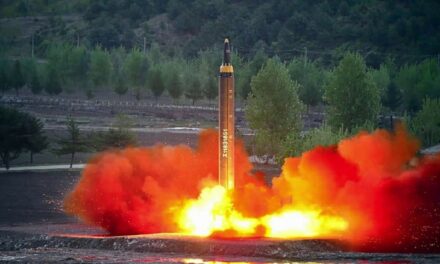We support our Publishers and Content Creators. You can view this story on their website by CLICKING HERE.
Key Points: The Russian Su-34 Fullback fighter-bomber, despite its capabilities, has suffered heavy losses in Ukraine, with reports suggesting at least 36 aircraft destroyed.
-Challenges such as effective Ukrainian air defenses and poor Russian air force strategy have highlighted the Su-34’s vulnerabilities.
-While the United Aviation Corporation continues to produce replacements, questions remain about the Fullback’s ability to survive in contested airspace.
-Experts suggest Russia should limit Su-34 operations to stand-off missile launches to mitigate further losses.
-Meanwhile, Ukraine’s layered air defenses continue to challenge Russian airpower, as the Kremlin refrains from deploying its more advanced Su-57 Felons over the battlefield.
Can the Russian Su-34 Fullback Fighter Keep Sustaining Losses?
It’s been a long slog for the Russian air force. The branch was supposed to achieve air dominance in a matter of weeks during the initial stages of the war in Ukraine, but that hasn’t happened.
Fighters have been destroyed by Ukrainian air defense systems that have proved highly effective during the conflict. The Ukrainian air force even has F-16s that can challenge the prowess (or lack of prowess) of the Russian aviators.
Bring More to the Fight
Now, there is some promising news from Vladimir Putin’s defense industrial base.
There will be a new shipment of Su-34 Fullback fighter-bombers to the Air Force. These warplanes are desperately needed after numerous Su-34s have been shot down over Ukraine. Estimates reveal that Russia may have lost at least 36 Su-34s – one was even shot down by an F-16.
The United Aviation Corporation said it will send an unknown number of Su-34s to western Russia for service over Ukraine. “All aviation factories of Rostec involved in fulfilling state defense orders continue to operate at full production capacity. Our enterprises constantly improve production processes to ensure accelerated rates of equipment production,” the corporate press release stated.
Russian Air Force Su-34 Fighter. Image Credit: Creative Commons.
What’s Happening to the Su-34?
United Aviation Corporation should be given credit for keeping the production lines open and making more airplanes during a pressure-packed time of war. But maybe the Russian Air Force should conduct an after-action review to figure out how and why the Ukrainians have destroyed all of these Su-34s. Is it pilot error, lack of combat experience, or just a jet that can’t survive in warfare?
Why Not Deploy the Su-57 Instead?
The Russians have more advanced fighters like the Su-57 Felon. The Felon undertook a successful demonstration flight at the recent Zhuhai Air Show in Guangdong, China. There had been speculation, especially from the Chinese military media, that the Su-57 was a paper tiger. But the Felon proved them wrong with a spectacular run of maneuvers at the air show.
However, Russia does not want to use its Su-57 over Ukraine. Losing even one Felon would be a huge embarrassment and a propaganda win for the Ukrainians. The Su-57 is a 5th generation jet that the Russian defense industry has much riding on.
The Su-34 has two engines and is a twin-seat medium-range warplane that can pack a punch with air-to-air and air-to-surface missiles and an assortment of bombs.
The Su-34 is about a decade old having entered service in 2014. It saw some action over Georgia during Russia’s invasion of that country in 2008.
Take the Su-34 Out of Action
However, the Su-34 has endured a run of bad luck against the Ukrainians. The Fullback really needs to be “benched” but the Russians have not given up.
It seems the best tactic the Su-34 should employ is to fly only over Russian air space and fire stand-off over-the-horizon missiles at ground targets. Ukrainian surface-to-air missiles will continue to be successful against the Su-34 if it still flies with reckless abandon.
The Russian Air Force has suffered from “poor leadership, lack of training, and ground-centric doctrine,” according to Air and Space Forces magazine. Alternatively, the Ukrainians have outstanding air defenses such as excellent radars and “long-range [SA-10] and medium-range [SA-11 and SA-8] SAM batteries, anti-aircraft guns, and thousands of man-portable air-defense missiles [MANPADS],” the magazine said.
Ukraine Is Great at Air Defense
These systems have challenged Russian pilots. Air battle planners at headquarters have been given many headaches during the war. The Su-34 has succumbed to a lack of prior combat experience against a foe with such a capable air defense system.
Give credit to the individual Ukrainian operators of these SAM batteries and MANPADS. It takes a steady hand to fire a Stinger missile knowing the enemy aircraft can send a bomb or missile at your position. Ukrainian defenses are layered in depth and able to take out low-flying and high-flying warplanes. This has been the answer for the Su-34, and it has been a disappointment for the Russians.
However, Vladimir Putin’s forces are not afraid to take casualties, and defense strategists value quantity over quality. That seems to be a common refrain for the war in Ukraine. The Russians suffered casualties and depended on the defense industry to pick up the slack.
More Su-34s will probably meet their doom, but the United Aviation Corporation chugs along and pushes out more Fullbacks. Ukraine is perhaps glad not to face the Su-57 Felon in great numbers, and they will happily shoot more Su-34s out of the sky.
About the Author: Dr. Brent M. Eastwood
Brent M. Eastwood, PhD, is the author of Don’t Turn Your Back On the World: A Conservative Foreign Policy and Humans, Machines, and Data: Future Trends in Warfare plus two other books. Brent was the founder and CEO of a tech firm that predicted world events using artificial intelligence. He served as a legislative fellow for U.S. Senator Tim Scott and advised the senator on defense and foreign policy issues. He has taught at American University, George Washington University, and George Mason University. Brent is a former U.S. Army Infantry officer. He can be followed on X @BMEastwood.

 Conservative
Conservative  Search
Search Trending
Trending Current News
Current News 





